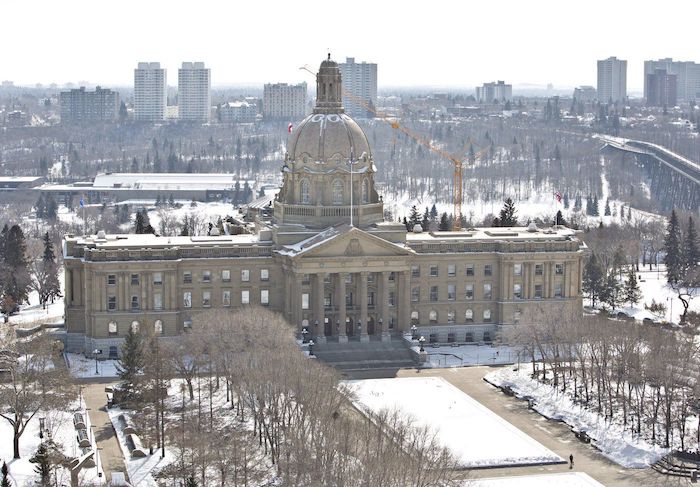Alberta
Budget 2023 – Alberta’s Affordability Action Plan

Budget 2023 funds ongoing programs and services that support Albertans and builds on Alberta’s Affordability Action Plan, expanding relief for high utility costs and providing new measures for students, workers in the social services and disability sectors, and in continuing care.
Alberta’s government is permanently extending the natural gas rebate program. Moving forward, whenever natural gas prices exceed $6.50 per gigajoule, the rebate will take effect.
“Inflation continues to challenge Albertans, and affordability remains top of mind for many. That’s why we are working hard to save Albertans money so they can focus on what really matters. Budget 2023’s strong affordability measures – including extended fuel tax relief, continued utility rebates and new supports for students and social services workers – will help to keep life affordable for families, seniors, individuals and vulnerable groups across the province.”
Supporting post-secondary students
Post-secondary students in Alberta will see real relief, thanks to $238 million for new, targeted affordability measures.
Budget 2023 caps tuition fee increases for domestic students at two per cent annually effective for the 2024-25 school year.
Students receiving financial assistance will get more help repaying their loans, with an extension of the student loan grace period from six months to one year and an increase to the threshold for eligibility for the loan repayment assistance plan to $40,000, up from $25,000 in income.
Albertans repaying student loans will see their payments drop by an average of $15 per month thanks to the new student loan interest rate being reduced from prime plus one per cent to prime.
“These new measures will help all students keep up with the increased cost of living. We are committed to keeping post-secondary education accessible and affordable so that all Albertans can gain the skills and knowledge they need to build successful careers and secure Alberta’s future.”
Supporting families
Parents shouldn’t have to choose between filling up the car and putting food on the table. Budget 2023 leaves more money in the pockets of Alberta families by funding affordability measures, including direct payments of $100 per month through June 2023. All parents or guardians of a dependent under 18 can still apply to get $100 per month for six months for each child if their adjusted household income is below $180,000, based on the 2021 tax year.
Through Budget 2023, investments of $90 million over three years will help secure more supports for families with young children by indexing the Alberta Child and Family Benefit to inflation, increasing benefit amounts by six per cent in 2023.
Enabling parents to expand their families and helping more children find their forever home by making in-Alberta adoptions more affordable is an important initiative in Budget 2023. Alberta’s government is investing $12 million more over three years and providing supplementary health benefits for children adopted from government care or through licensed adoption agencies to ensure more successful adoptions. In addition, there is $6,000 in grant funding for prospective adoptive parents making less than $180,000 a year and an increase of the provincial adoption expense tax credit to $18,210 to match the federal threshold in 2023.
Budget 2023 allocates $1.3 billion in 2023-24, $1.4 billion in 2024-25 and $1.6 billion in 2025-26 in operating expense in the Child Care program from provincial funding and Alberta federal-provincial child-care agreements.
An additional operating expense of $143 million over three years responds to the increasing complexity of children receiving child intervention services and an additional $26 million over three years will support youth and young adults in care transitioning to adulthood.
“We want a better future for our children, which is why we are continuing to prioritize making high-quality child care more affordable and accessible for Alberta families. We are also providing more supports to reduce barriers in the adoption process as well as increasing supports for vulnerable children and youth in care while advancing our government’s priority of making life more affordable for all Albertans.”
Supporting seniors and other vulnerable Albertans
Seniors aged 65 and over with a household income under $180,000 based on the 2021 tax year are still eligible to receive direct payments of $100 per month for six months (January 2023 to June 2023).
Albertans who receive the Alberta Seniors Benefit, AISH and Income Support have been automatically enrolled to receive the same Affordability Relief Payments of $600 over six months.
Alberta’s government is further supporting seniors, low-income and vulnerable Albertans with a six per cent increase to core benefits in 2023. Benefits including AISH, Income Support and the Alberta Seniors Benefit are indexed to inflation, which is helping Albertans combat today’s increased cost of living.
Budget 2023 helps put food on Albertans’ tables by funding local food banks, including $10-million direct funding through the Family and Community Support Services Association of Alberta and $10 million to match private donations, over two years.
Alberta’s government values the work done by disability service providers and workers throughout the province in caring for the disability community. That is why Budget 2023 provides a five per cent increase to the disability sector to help with administration costs in Persons with Developmental Disabilities (PDD) and Family Support for Children with Disabilities (FSCD) provider contracts and family-managed agreements.
It is important that Albertans are able to get to and from work, to a doctor’s appointment, the grocery store or a pharmacy. To support low-income transit pass programs, Budget 2023 is investing $16 million in 2023-24 to support municipalities throughout the province as they provide affordable transit to their residents.
“For so many seniors, low-income individuals and Albertans living with disabilities, the increased cost of living has made life more and more difficult to afford. Alberta’s government is continuing to take steps to support these individuals and families, which I know will have a huge impact for many households across the province.”
Supporting social services and disability services workers
The government is helping to attract and retain more social service workers to support more people in need. Budget 2023 includes $102 million in 2023-24 to increase wages for more than 20,000 workers in disability services, homeless shelters and family violence prevention programs. This funding builds on the $24 million the government provided to service providers in February to enable wage increases retroactive to Jan. 1, 2023.
Alberta’s government is also providing $8 million in 2023-24 for disability service providers to address increasing administrative costs.
Budget 2023 secures Alberta’s bright future by transforming the health-care system to meet people’s needs, supporting Albertans with the high cost of living, keeping our communities safe and driving the economy with more jobs, quality education and continued diversification.
Alberta
Is Canada’s Federation Fair?


 David Clinton
David Clinton
Contrasting the principle of equalization with the execution
Quebec – as an example – happens to be sitting on its own significant untapped oil and gas reserves. Those potential opportunities include the Utica Shale formation, the Anticosti Island basin, and the Gaspé Peninsula (along with some offshore potential in the Gulf of St. Lawrence).
So Quebec is effectively being paid billions of dollars a year to not exploit their natural resources. That places their ostensibly principled stand against energy resource exploitation in a very different light.
You’ll need to search long and hard to find a Canadian unwilling to help those less fortunate. And, so long as we identify as members of one nation¹, that feeling stretches from coast to coast.
So the basic principle of Canada’s equalization payments – where poorer provinces receive billions of dollars in special federal payments – is easy to understand. But as you can imagine, it’s not easy to apply the principle in a way that’s fair, and the current methodology has arguably lead to a very strange set of incentives.
According to Department of Finance Canada, eligibility for payments is determined based on your province’s fiscal capacity. Fiscal capacity is a measure of the taxes (income, business, property, and consumption) that a province could raise (based on national average rates) along with revenues from natural resources. The idea, I suppose, is that you’re creating a realistic proxy for a province’s higher personal earnings and consumption and, with greater natural resources revenues, a reduced need to increase income tax rates.
But the devil is in the details, and I think there are some questions worth asking:
- Whichever way you measure fiscal capacity there’ll be both winners and losers, so who gets to decide?
- Should a province that effectively funds more than its “share” get proportionately greater representation for national policy² – or at least not see its policy preferences consistently overruled by its beneficiary provinces?
The problem, of course, is that the decisions that defined equalization were – because of long-standing political conditions – dominated by the region that ended up receiving the most. Had the formula been the best one possible, there would have been little room to complain. But was it?
For example, attaching so much weight to natural resource revenues is just one of many possible approaches – and far from the most obvious. Consider how the profits from natural resources already mostly show up in higher income and corporate tax revenues (including income tax paid by provincial government workers employed by energy-related ministries)?
And who said that such calculations had to be population-based, which clearly benefits Quebec (nine million residents vs around $5 billion in resource income) over Newfoundland (545,000 people vs $1.6 billion) or Alberta (4.2 million people vs $19 billion). While Alberta’s average market income is 20 percent or so higher than Quebec’s, Quebec’s is quite a bit higher than Newfoundland’s. So why should Newfoundland receive only minimal equalization payments?
To illustrate all that, here’s the most recent payment breakdown when measured per-capita:
 |
For clarification, the latest per-capita payments to poorer provinces ranged from $3,936 to PEI, $1,553 to Quebec, and $36 to Ontario. Only Saskatchewan, Alberta, and BC received nothing.
And here’s how the total equalization payments (in millions of dollars) have played out over the past decade:
Is energy wealth the right differentiating factor because it’s there through simple dumb luck, morally compelling the fortunate provinces to share their fortune? That would be a really difficult argument to make. For one thing because Quebec – as an example – happens to be sitting on its own significant untapped oil and gas reserves. Those potential opportunities include the Utica Shale formation, the Anticosti Island basin, and the Gaspé Peninsula (along with some offshore potential in the Gulf of St. Lawrence).
So Quebec is effectively being paid billions of dollars a year to not exploit their natural resources. That places their ostensibly principled stand against energy resource exploitation in a very different light. Perhaps that stand is correct or perhaps it isn’t. But it’s a stand they probably couldn’t have afforded to take had the equalization calculation been different.
Of course, no formula could possibly please everyone, but punishing the losers with ongoing attacks on the very source of their contributions is guaranteed to inspire resentment. And that could lead to very dark places.
Note: I know this post sounds like it came from a grumpy Albertan. But I assure you that I’ve never even visited the province, instead spending most of my life in Ontario.
Which has admittedly been challenging since the former primer minister infamously described us as a post-national state without an identity.
This isn’t nearly as crazy as it sounds. After all, there are already formal mechanisms through which Indigenous communities get more than a one-person-one-vote voice.
Subscribe to The Audit.
For the full experience, upgrade your subscription.
Alberta
Big win for Alberta and Canada: Statement from Premier Smith

Premier Danielle Smith issued the following statement on the April 2, 2025 U.S. tariff announcement:
“Today was an important win for Canada and Alberta, as it appears the United States has decided to uphold the majority of the free trade agreement (CUSMA) between our two nations. It also appears this will continue to be the case until after the Canadian federal election has concluded and the newly elected Canadian government is able to renegotiate CUSMA with the U.S. administration.
“This is precisely what I have been advocating for from the U.S. administration for months.
“It means that the majority of goods sold into the United States from Canada will have no tariffs applied to them, including zero per cent tariffs on energy, minerals, agricultural products, uranium, seafood, potash and host of other Canadian goods.
“There is still work to be done, of course. Unfortunately, tariffs previously announced by the United States on Canadian automobiles, steel and aluminum have not been removed. The efforts of premiers and the federal government should therefore shift towards removing or significantly reducing these remaining tariffs as we go forward and ensuring affected workers across Canada are generously supported until the situation is resolved.
“I again call on all involved in our national advocacy efforts to focus on diplomacy and persuasion while avoiding unnecessary escalation. Clearly, this strategy has been the most effective to this point.
“As it appears the worst of this tariff dispute is behind us (though there is still work to be done), it is my sincere hope that we, as Canadians, can abandon the disastrous policies that have made Canada vulnerable to and overly dependent on the United States, fast-track national resource corridors, get out of the way of provincial resource development and turn our country into an independent economic juggernaut and energy superpower.”
-

 2025 Federal Election2 days ago
2025 Federal Election2 days agoMark Carney refuses to clarify 2022 remarks accusing the Freedom Convoy of ‘sedition’
-

 Catherine Herridge1 day ago
Catherine Herridge1 day agoFBI imposed Hunter Biden laptop ‘gag order’ after employee accidentally confirmed authenticity: report
-

 2025 Federal Election1 day ago
2025 Federal Election1 day agoDon’t let the Liberals fool you on electric cars
-

 International1 day ago
International1 day agoTrump’s ‘Golden Dome’ defense shield must be built now, Lt. Gen. warns
-

 Crime1 day ago
Crime1 day agoFirst Good Battlefield News From Trump’s Global War on Fentanyl
-

 COVID-192 days ago
COVID-192 days agoMaxime Bernier slams Freedom Convoy leaders’ guilty verdict, calls Canada’s justice system ‘corrupt’
-

 Courageous Discourse10 hours ago
Courageous Discourse10 hours agoEurope Had 127,350 Cases of Measles in 2024
-

 Immigration2 days ago
Immigration2 days agoImmigrant background checks are unrelated to national security?





